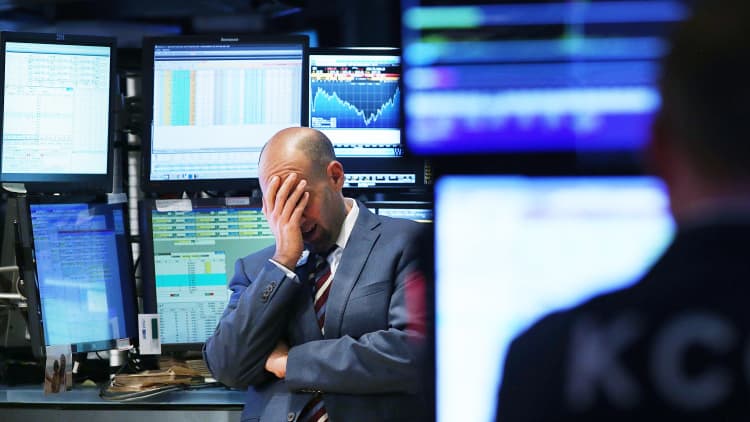
Investors are back on recession watch.
Fears of a slowdown triggered by weakening global economic growth, contracting U.S. factory activity and trade tensions continued to drag on the markets Wednesday. The Dow Jones Industrial Average plummeted more than 450 points in day two of a sell-off that wiped out all third-quarter gains.
Five experts break down whether we're about to tip into recession.
Mark Zandi, chief economist at Moody's Analytics, says that we are approaching what looks like the beginning of an economic downturn.
"The broad base weakening is less hiring pretty much everywhere, but we are seeing more weakness in manufacturing. And I do think in the coming months, we will see manufacturing turn negative. If unemployment rises ... that spooks people. They immediately sense that you know, they sense the slower job growth, they sense the fewer job openings, they sense the pay increases aren't as big, they become more cautious. Businesses see that and they become more cautious in their hiring, you can see how we get into this self-reinforcing vicious cycle, that's a recession. So if we go from 3.7% to 4%, and we do that in the next two, three or four months, that that would be a strong signal that we are headed for an economic downturn."
Barry Bannister, managing director at Stifel Financial, says weaker economies are dampening U.S. growth.
"Manufacturing has the highest gross value added as a percent of GDP. It does matter and it can lead the PMI services nonmanufacturing lower. We'll get that tomorrow. But I would say there has been leakage from the weak economy overseas into the U.S. market and we're seeing the effects of that now."
Jurrien Timmer, director of global macro at Fidelity Investments, says the slowdown in manufacturing doesn't have a clear bottom right now.
"We're basically in an industrial recession, a global one, and it does remind me of 2016, even 1998, where the U.S. was OK, the rest of the world was not. ... It all depends on whether the bottom is here ... six months from now. And that could be like catching a falling knife. So it is a very tricky period here where you just don't know where the bottom is going to be and whether the decline on the industrial manufacturing side is enough to tip the entire economy over."
Tobias Levkovich, chief U.S. equity strategist at Citigroup, says the U.S. hasn't arrived at a panic yet, but it is approaching.
"Our panic-euphoria model, a kind of proprietary sentiment metric, it's not in panic, but it's near panic territory. ... We're likely to see some improved economic conditions here in the U.S. in the fourth quarter into the beginning of next year. And that's not in the current mindset. So that would be supportive of markets, earnings, etc. ... We just completed a survey of institutional investors and they're really fascinatingly shifting from being defensive and kind of growth-oriented to more value and cyclicals for 2020 in terms of their sector preferences. So investors may not be there yet, but they do see a different view for 2020."
Keith Lerner, chief market strategist at SunTrust Bank, says distinguishing between a slowdown and a recession is crucial right now.
"We're having another gut check. It almost feels like deja vu with this ISM number. ... Right now we have to recognize there's a difference between a slowdown and recession, we're still not in the recession camp. And also, even though there's been so much focus on the U.S., something important happened in the global PMI yesterday, that is they rose from the previous month, the second month in a row they've risen after a streak of 15 straight months down. So I think we're seeing some stabilization, sentiment is getting reset right now. And eventually, as we move past this, we still think that as we move towards the end of the year, we could see upside."





